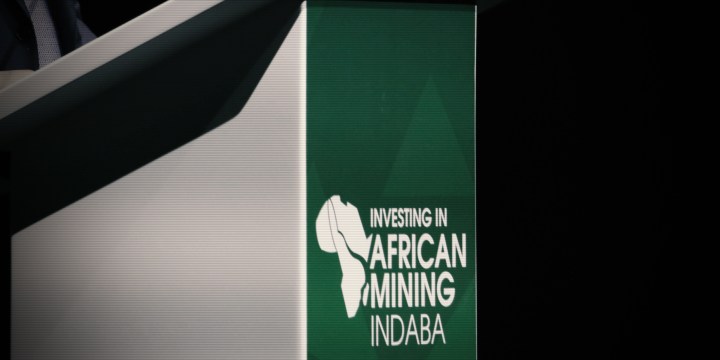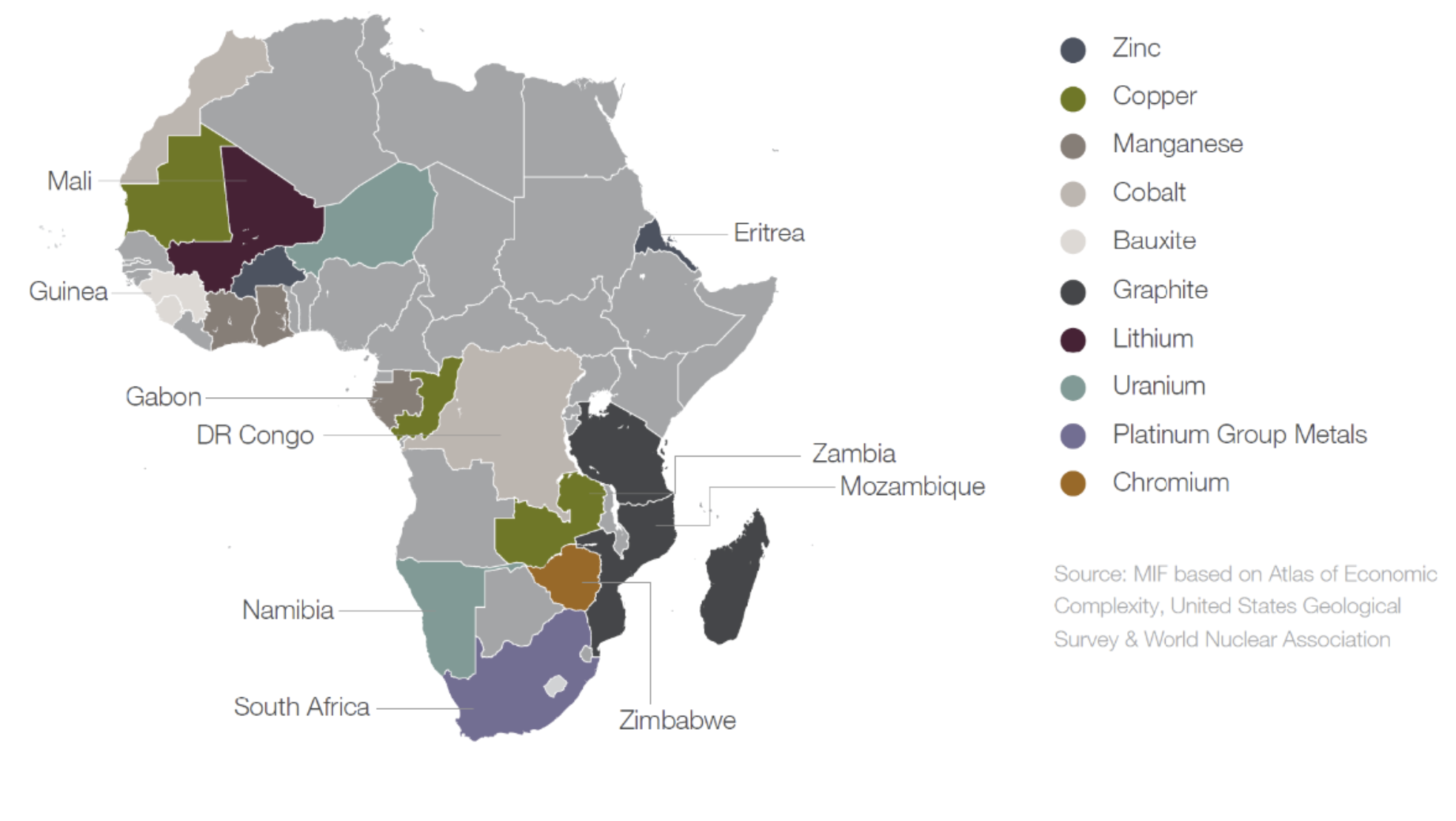MINERAL RESOURCES OP-ED
Africa’s critical minerals are key to the global net zero transition

Africa can benefit significantly from the demand for its minerals, provided an effective framework for sustainable development is implemented.
Africa stands at the forefront of the global energy transition, holding substantial reserves of the critical minerals necessary for achieving global net zero emissions by 2050. Its mineral future therefore holds great promise, but only if it is balanced with Africa’s domestic needs and particular challenges are acknowledged and addressed.
We unpack these complexities in our new report, “Mining in Africa and its role in the global energy transition”, released at Mining Indaba this week. We summarise the salient points below.
The role of mining and minerals in the global energy transition
The World Economic Forum predicts that around three billion tonnes of metal are needed for the world to attain net zero emissions and curb global warming by 2050, the deadline set for all parties to the Paris Agreement. The International Energy Agency, in turn, projects a substantial increase in demand by 2040 for minerals such as lithium, graphite, nickel and cobalt. These minerals are needed for energy transition technologies.
Overall, Africa possesses 30% of the world’s mineral resources and 19% of the global reserves essential for clean energy technologies, such as battery-powered electric vehicles (EVs). Platinum group metals and manganese from South Africa, copper from Zambia and Mali, uranium from Namibia, lithium and cobalt from the DRC, graphite from Mozambique and Madagascar, and manganese from Gabon — these mineral resources have the potential to play a significant role in the global energy transition, quite aside from more mineral deposits that have yet to be identified through ongoing exploration and prospecting.

African countries: selected critical minerals. (Graphic: Supplied)
As a result, Africa has become a magnet for mining companies looking to unearth new deposits to accelerate the energy transition and unlock wealth for the continent. The continent’s unexplored potential is attracting growing exploration budgets, reaching a 10% share of the global budget in 2022.
But while these opportunities help shape global capital allocation for the energy transition, evolving technologies and potential mineral substitutions add complexity to long-term planning and investment in African minerals.
Certain minerals such as copper, lithium, chromium and manganese are expected to remain in demand while there are no technological alternatives available for battery storage. The recent agreement at COP28 to expand global renewable energy capacity by 2030 to at least 11,000GW can only help to confirm demand forecasts for these metals.
Risks to overcome to close the financing gap for net zero
As mining companies focus on becoming critical metal suppliers, financing gaps hinder additional production across Africa and elsewhere. A recent joint study by Allen & Overy and the Climate Reporting Initiative reveals a substantial shortfall in climate finance, estimating a need for $6.2-trillion annually between 2023 and 2030 and $7.3-trillion (or a total of $200-trillion) by 2050.
So far only $1-trillion has been spent on the energy transition. The mining industry must triple its investment to $331.5-billion yearly by 2050 to align with the net zero pathway.
In Africa, financing for the extraction of critical metals is impacted by political, legal, financial, currency and pricing volatility, developmental, logistical, and supply and demand risks.
The continent’s exploration budgets have increased, but limited processing infrastructure requires further investment. Another barrier to further investment is resource nationalism — the tendency of governments to assert control, for strategic and economic reasons, over natural resources located in their territories.
Meanwhile, supply challenges hamper long-term planning for minerals destined for ever-evolving products and technologies, and years of capital constraints and general underdevelopment by African governments and stakeholders pose risks to mining companies wishing to bring assets into production to capitalise on demand.
Even though commodities are scarce and global demand is high, price stability remains elusive. Lithium, for example, is a highly specialised commodity that is produced in limited quantities in limited regions and remains very price-sensitive to geopolitical conditions and regulations. Lithium prices surged in 2021 and 2022 based on growing demand for EVs, but underwent tumultuous changes in 2023 due to rising inflation and economic uncertainty.
In addition, Africa needs to grow its renewable energy capacity substantially so that it can mine its minerals in a way that will not increase — and hopefully reduce — its carbon emissions. Africa’s renewable energy capacity accounts for less than 2% of the global total, so there is substantial room for growth.
Africa and the global mining industry must balance their interests
African mineral supply challenges have complex causes. Firstly, many African governments struggle to address domestic energy shortages and consistency of supply while trying to manage their own emissions under international agreements. They also feel increasingly marginalised from the global climate debate.
This is coupled with the realisation that the utilisation of African resources cannot simply be just about revenue for mining companies and governments. Extraction of resources in Africa must also be undertaken with a view to enhancing living standards for local communities, mitigating local environmental impacts and increasing education, employment and food security.
More than ever, mining companies need to demonstrate that they are planning how to meet these essential needs with magnanimity, alongside the ever-expanding environmental, social and governance (ESG) requirements, while embracing new and sustainable production technologies.
The way global mining companies participate has major implications for how miners operating in Africa pivot mining practices and operating principles to ensure the sector’s viability and sustainability into 2050 and beyond. Everyone wins if they can get this right.
The benefits of thoughtful ESG go both ways; proactive ESG measures, such as building renewable power plants and supporting local communities, enhance companies’ green credentials and contribute to their own sustainability. A proactive approach to sustainability and understanding jurisdictional differences across Africa also minimises the risk of legal challenges on ESG-related grounds. Disputes and litigation driven by NGOs highlight the need for thorough due diligence in weaker regulatory jurisdictions.
Finding solutions through technology
New mining and energy technologies are key to creating sustainable mining practices. Digitisation and smart technology are being used not only to accelerate development and improve productivity, but also to improve energy efficiency, enhance worker safety, increase diversity in the workforce and reduce operational emissions.
The use of digital applications, big data, remote monitoring systems, drones, robotics and generative artificial intelligence (AI) have given birth to smart mines and geoscience at large.
Fundamentally, the energy transition is triggering a technology transition as stakeholders look to innovations such as new designs, efficiency improvements and even mineral substitutions which could render the need for critical minerals unnecessary, in whole or in part. All of this could change the mineral demand picture quite substantially over the coming years.
Several factors determine the degree of sensitivity a particular critical mineral has to shifts in its demand forecasts due to technological evolution. An in-demand critical mineral with many uses and few effective substitutes has more stable forecasts. A good example is copper, which is used in a wide range of clean energy infrastructure and has, at least under the current technological horizon, no effective alternatives.
Conclusion
Africa can benefit significantly from the demand for its minerals, provided an effective framework for sustainable development is implemented. It presents real opportunities for mining companies and their key stakeholders. However, balancing mining opportunities with Africa’s domestic needs is crucial.
If Africa can develop clean energy infrastructure and use some of its own critical minerals to abate power shortages, improve living standards and reduce emissions, African mining will play a key role in a just and fair energy transition for the continent itself, as well as for the global community. DM
Gerhard Rudolph and Alessandra Pardini are mining and energy law experts at international law firm Allen & Overy.

















Comments - Please login in order to comment.